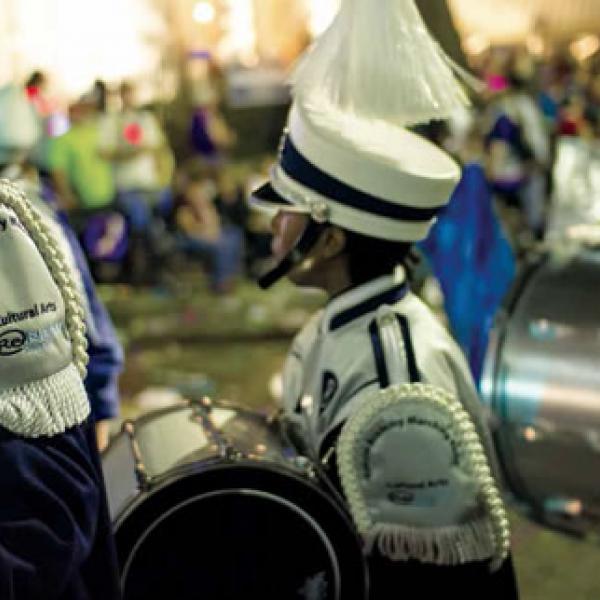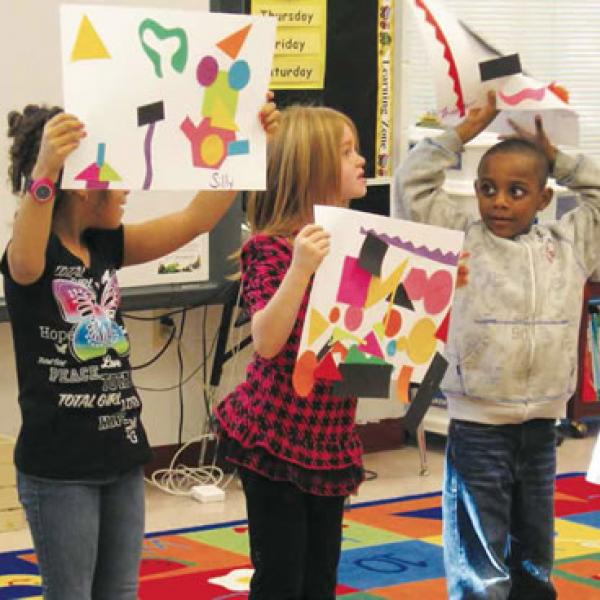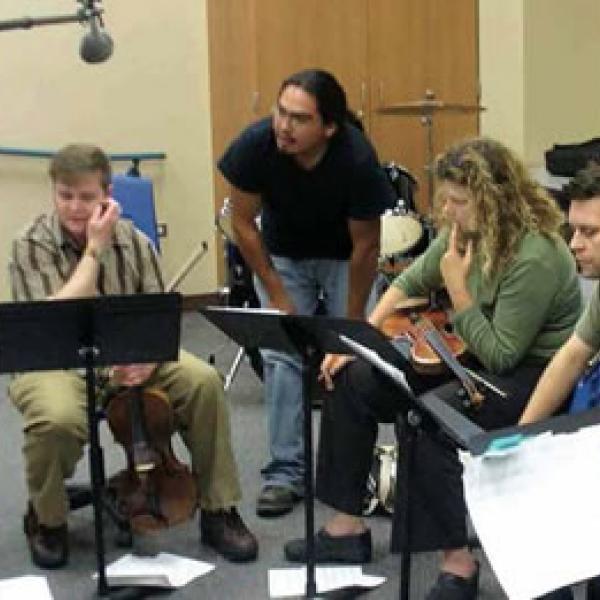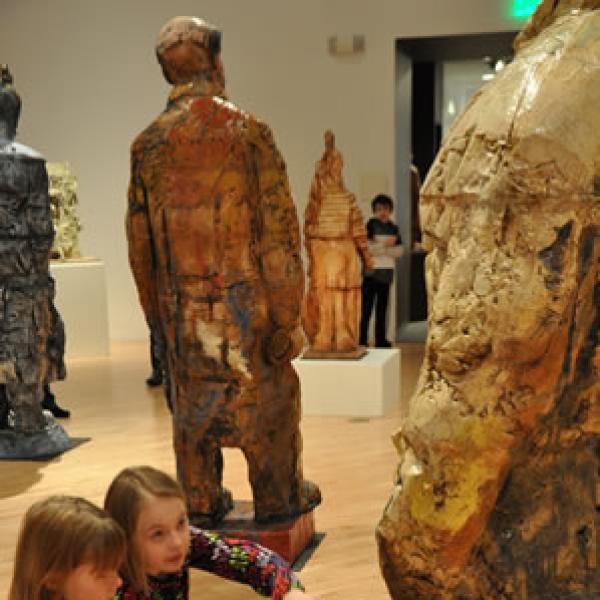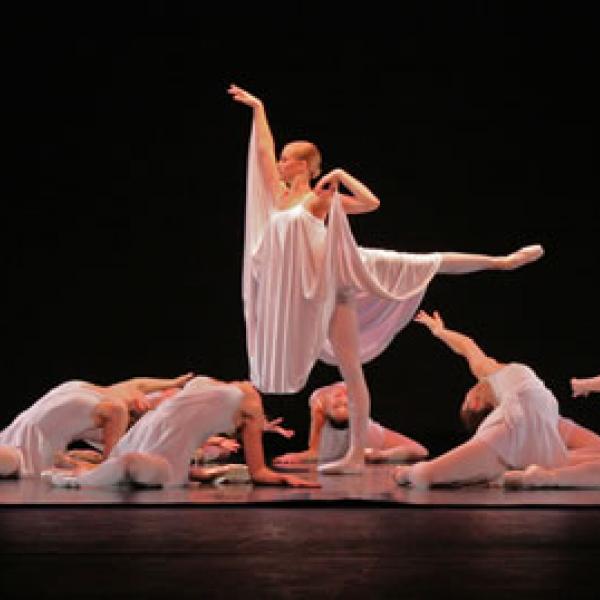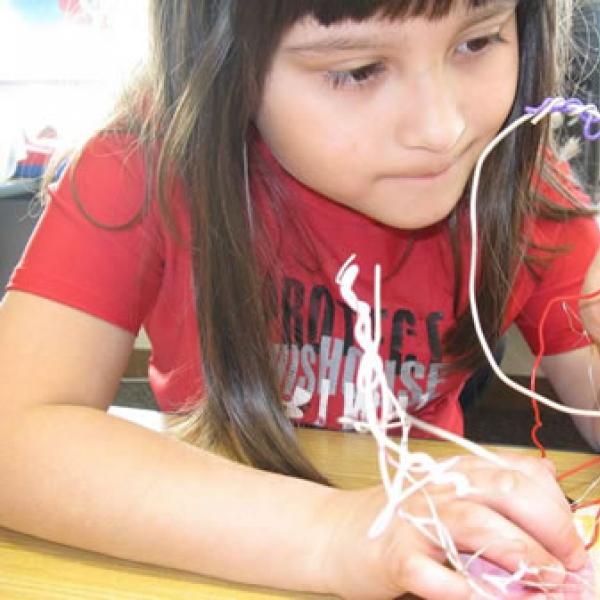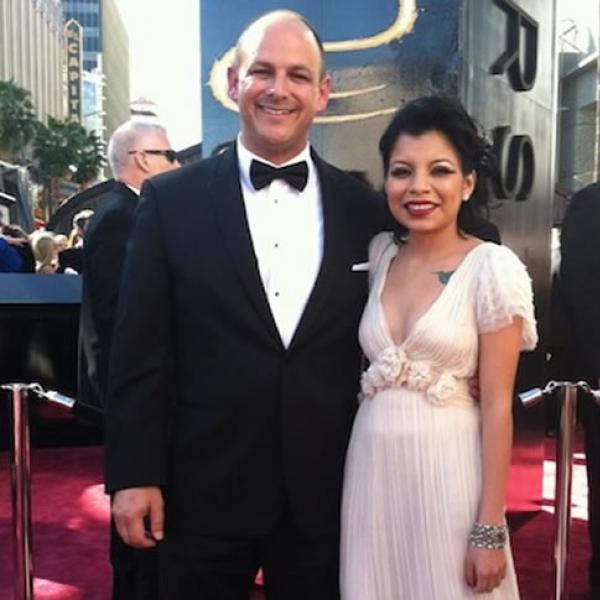Mind Pop
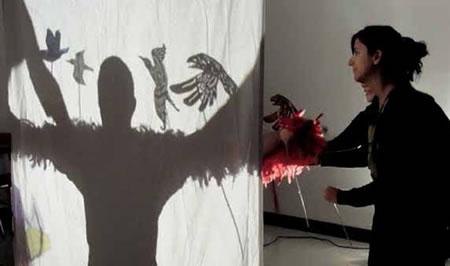
MindPOP partner Drama for Schools/UT Austin uses shadow puppetry to teach drama-based strategies to Austin public school teachers. Photo courtesy of Drama for Schools
Is the presence of fine arts teachers in a school enough to guarantee that all students are receiving a quality arts education? That was the question facing the Austin Independent School District (AISD), an urban district in Texas with more than 86,000 K-12 students in 2009. Despite Austin's reputation as an arts city, and a commitment to hiring fine arts teachers for all of its schools, it seemed that some students weren't reaping the potential benefits of an arts education: increased participation, fewer absences, and better standardized test scores. AISD Superintendent Meria Castarphen decided the solution was to do more than just deliver a basic arts education. She wanted to create arts-rich schools in which creative learning extended across all classrooms regardless of subject matter, and took place outside as well as inside each school's walls.
Greg Goodman, AISD's fine arts head, characterized arts-rich schools as ones that "promote, teach, and celebrate creativity as the focal point of instruction and learning in all classes." He added that putting creativity at the center of learning resulted in "higher student and faculty attendance, higher promotion rates, fewer discipline problems, and an increase in parental support and community engagement."
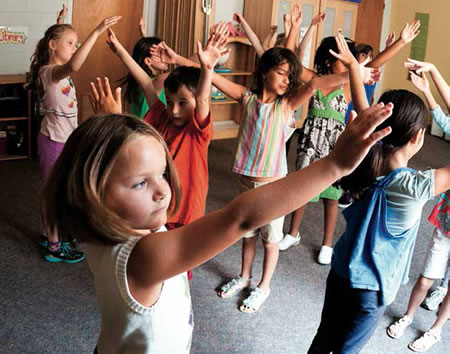
Brent Hasty, executive director of the nonprofit MindPOP and a clinical professor in social studies education at the University of Texas, agreed. According to Hasty, "An arts-rich school does not only teach kids in deep ways about an art form, but it also uses some of the arts-based instructional strategies in other places that are not about teaching the art form at all." In other words, traditional arts activities such as role-playing can take place in history class as well as theater class.
To work toward the task of defining and creating arts-rich schools in Austin, local funders and Castarphen asked Hasty to convene community stakeholders. He assembled a community-wide working group to uncover the reasons the district's current arts education plan wasn't working as well as it should. Partners included the school district, city offices such as Parks and Recreation and the Cultural Arts Division, local philanthropies, and arts organizations such as VSA Texas and Ballet Austin.
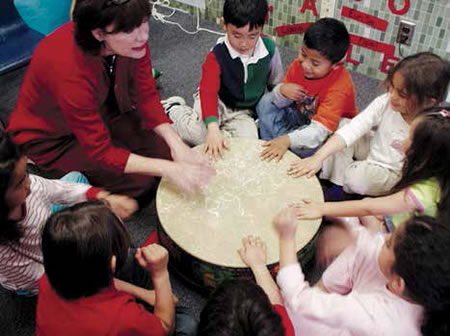
The group eventually outlined four categories of barriers to success, the first of which was equity and access. They discovered that whether a student was in a so-called poor school, or a rich one, there were actually other factors that played a role in restricting the student's arts education experience. For example, Hasty explained, kids who were struggling academically often were pulled out of arts classes. A second set of barriers fell under the heading of impact and measurement, which, according to Hasty, meant that even if arts organizations were delivering high-quality programs, "they didn't have the evaluation background to know if they were making a difference." Hasty cited professional development as the third barrier: "Our general classroom teachers didn't always have access to how to use arts integration or arts-based strategies." Finally, the district lacked a single channel for directing teachers, parents, and other stakeholders to the community's available resources.
After the working group teased out the challenges they needed to address, they recognized MindPOP as a nonprofit hub for stakeholder collaboration and to oversee the strategic planning process. Goodman described MindPOP -- named for the moment in learning when everything "clicks" -- as an "avenue for the district, city, community artists, philanthropists, and higher education to join resources and knowledge to create a powerful team of stakeholders in order to move student achievement in Austin ISD."
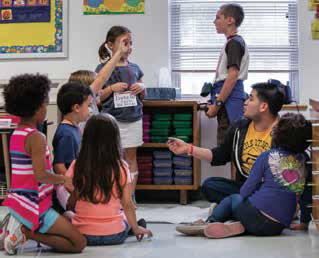
In 2011, Austin was chosen to participate in the Kennedy Center's Any Given Child initiative, which through intensive consultation services works with school districts in selected locations across the country to develop tailor-made, long-term arts education strategies. Austin is the seventh city to participate in the initiative, with MindPOP acting as the main contact.
After an extensive literature review, MindPOP undertook a comprehensive research effort to mine data specific to the community. That data revealed that individual students who were highly engaged in the arts showed higher attendance rates and did significantly better on statewide standardized tests. Even students in high-poverty schools performed better academically if they were engaged in the arts. While these types of statistics from other communities were familiar to many in the arts education field, it made a major impact on local leaders to see similar results from Austin's own kids. "Now we have people who might not have the same confidence [as the arts community] that the arts could solve these other issues for them and [now want] to use this strategy in closing the achievement gap or keeping kids in school or getting kids ready for college and career," said Hasty.
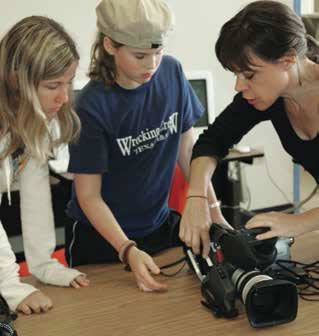
MindPOP also surveyed 108 K-8 principals, 1,553 classroom teachers, 330 fine arts specialists, and 53 Austin arts organizations, asking about everything from arts funding to professional development. They also took an inventory of the city's arts resources: How many minutes per week did the students receive instruction in specific arts disciplines? How much arts integration was exhibited in academic subject classrooms? How were community partners involved at each grade level? Hasty noted that local educators were highly invested in the process. "We had about two-thirds of the general classroom teachers respond to the survey, which is pretty amazing. We had 100 percent compliance with the principals; they highly valued the arts."
After the nine-month process, MindPOP leveraged the data into an ambitious plan to transform the learning environments of Austin's schools. Hasty explained, "Our plan is really looking at the three legs of the school, making sure that there's access to fine arts learning in and out of school, that teachers have access to arts-based instructional strategies to use in their classrooms, and that there are connections to the community for kids in their families to arts organizations, to all of the places in the community where we know arts learning is happening."
The new strategy, as outlined in an October 2012 Any Given Child Summary Report, comprises five goals: to increase creative learning moments for students in and out of school; create arts-rich schools for each and every student; create a community network that supports and sustains the arts-rich life of every child; develop leaders and systems that support and sustain quality creative learning for the development of the whole child; and demonstrate measurable impacts on students, families, schools, and the Austin community.
Ultimately, the focus of the new strategic plan is engagement -- students who are more engaged with learning, educators who are more engaged with teaching, and a community that is engaged with supporting the success of the next generation.
A significant element of the revamp is intensive professional development for classroom teachers. "All of our campuses commit to two half-day, full faculty trainings where we teach them how, when, and why to use arts-based strategies." Not only are the teachers given a "toolbox" of strategies to use, but they're taught how each strategy changes given the goal of an assignment. For example, is it a hook to get the students interested in a topic, or is it being used as an assessment to find out what the students have learned? Hasty added, "We decided to do an instructional approach, rather than a curricular approach." In other words, teachers don't receive prescribed lesson plans. Instead, they can take the approaches they've learned and apply them to any lesson plan.
One example Hasty gave was using theater to help a social studies class look at the complexity of the colonization of the Americas. Traditionally, students would get the point-of-view of both sides but not necessarily gain an understanding that encompassed the dynamic between both sides. Using role-playing, however, students literally embody that dynamic, gaining a deeper understanding of both sides of the conflict.
Hasty noted that by supplying teachers with tools rather than lesson plans, there's no resistance of the "I don't have time for this" variety. Teachers also receive support at the district level. "The question is, ‘How well are you doing it, and do you need any help?' And if you need help, we can provide you some professional development."
Various types of empowering activities support the other goals of the arts education strategic plan. For one thing, it's become more fully embedded in the city's own strategic plan for the cultural community, Create Austin, which charts a course for cultural development over the next ten years in the city. This opened up further opportunities for collaboration among city offices in support of arts education. "We're trying to build the kind of advocacy that we need and really building the leadership to support it across all of the sectors," said Hasty. "We're doing innovative things -- like MindPOP has funded part of a development position in the school district to help them build their capacity to raise money for the arts."
Given all the moving parts, so to speak, it may be a full decade before the plan is fully operational. Hasty, however, remains optimistic about its success, especially in light of the high degree of collaboration and cooperation that has characterized the project so far. "One of the most exciting things is thinking about the work we have to do to achieve our plan, and each of those different entities saying, ‘I can do this part.' ‘It makes sense for me to do this part.' ‘It makes sense for you to do that part.' And it's really collective impact at a functional level."


